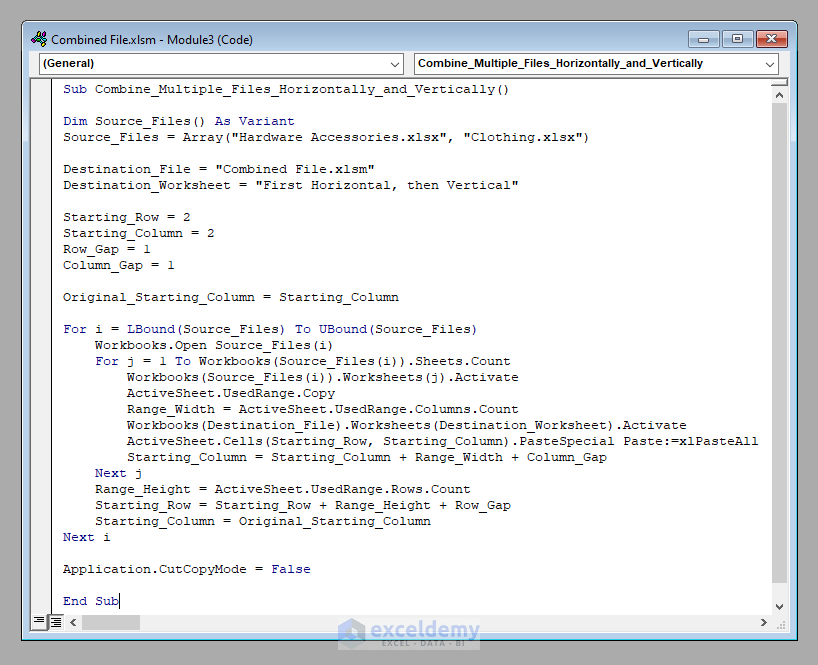Merge Multiple Excel Sheets Into One Quickly

Whether you're a data analyst, a financial expert, or simply someone managing a large amount of data, merging multiple Excel sheets into one can be a daunting task. However, mastering this skill can significantly streamline your work, allowing you to consolidate data quickly and efficiently. In this comprehensive guide, we'll explore different methods to merge Excel sheets, ensuring you're equipped with the tools and knowledge to handle any scenario you encounter.
Why Merge Excel Sheets?

Merging Excel sheets is not just about reducing clutter. Here are some key reasons why this skill is indispensable:
- Efficiency: Consolidating data into a single sheet reduces the need to switch between files.
- Data Analysis: Analyzing data from various sources becomes simpler when everything is in one place.
- Reporting: For creating comprehensive reports or presentations, a unified dataset is crucial.
Methods to Merge Excel Sheets

Method 1: Manual Copy and Paste

The simplest, albeit least efficient, method is to manually copy data from one sheet into another:
- Open both the source Excel workbook with multiple sheets and your target workbook.
- Select the data you want to merge from the source sheet, right-click, and choose Copy.
- Navigate to your target sheet, right-click where you want to paste the data, and select Paste.
⚠️ Note: This method becomes cumbersome with large datasets or multiple sheets.
Method 2: Using Excel Formulas

If your sheets have a similar structure, using Excel formulas can automate the merging process:
| Formula | Purpose |
|---|---|
| =Sheet1!A1 | Direct cell reference to data in Sheet1 |
| =VLOOKUP() | Lookup values in a table or array |
| =QUERY() | Perform SQL-like queries on your data |

You can reference or combine data from multiple sheets using these formulas. For example, if you have headers named ‘Name’ and ‘Address’ in Sheet1 and Sheet2 respectively, you could use:
=‘Sheet1’!A2 & “ ” & ‘Sheet2’!B2
This formula concatenates the ‘Name’ from Sheet1 with the ‘Address’ from Sheet2, assuming the data aligns properly.
Method 3: Power Query

Power Query, introduced in Excel 2010 and later versions, provides a powerful way to merge multiple Excel files:
- Go to Data > Get Data > From File > From Folder.
- Select the folder containing your Excel files, and Power Query will import all the relevant sheets.
- You can now combine these sheets into a single table using the Append Queries feature.
- Refresh your data set when new files are added, and Power Query will automatically update.
Method 4: Using Excel VBA Macros

VBA (Visual Basic for Applications) can automate the merging process. Here’s a basic example of a VBA macro to merge sheets:
Sub MergeMultipleSheets() Dim ws As Worksheet Dim wb As Workbook Set wb = ThisWorkbook wb.Sheets(1).Cells.ClearFor Each ws In wb.Sheets If ws.Name <> wb.Sheets(1).Name Then ws.UsedRange.Copy wb.Sheets(1).Cells(Rows.Count, 1).End(xlUp).Offset(1, 0).PasteSpecial xlPasteValues End If Next ws Application.CutCopyMode = False MsgBox "Sheets have been merged!"
End Sub
This macro merges all sheets in the current workbook into the first sheet, starting from the next empty cell. You can customize it further depending on your data structure and needs.
Method 5: Using Third-Party Tools or Add-ins

There are numerous tools and Excel add-ins designed specifically for this purpose:
- ASAP Utilities: An add-in that offers various tools for Excel, including data merging options.
- Excel PowerUps Premium Suite: A paid tool that provides advanced Excel functionalities.
These tools can simplify the process, especially if you frequently deal with merging Excel sheets from different workbooks.
Wrapping Up

Merging multiple Excel sheets can be approached in many ways, from simple manual methods to advanced automation through Power Query or VBA. Each method has its own use case, depending on the complexity of the data, frequency of merging, and your comfort level with Excel. Understanding these techniques allows you to choose the most suitable method for your workflow, saving time and reducing the potential for errors in data consolidation. By mastering these tools, you can handle even the most complex data merging tasks with ease and confidence.
Can I merge sheets from different workbooks?

+
Yes, you can merge sheets from different workbooks. Methods like Power Query or VBA allow you to specify different file paths, making it possible to combine data from multiple sources.
What should I do if the sheets have different structures?

+
If the sheets have different structures, you might need to manually align the data or use a more complex VBA macro to normalize the data before merging. Alternatively, consider using Power Query’s Merge Queries feature to join or append data based on key columns.
How can I ensure that my merged data is up to date?

+
Using Power Query, you can set up a data refresh schedule to ensure that any changes in the source files are reflected in your merged sheet. This automated approach is efficient for keeping your data current.



